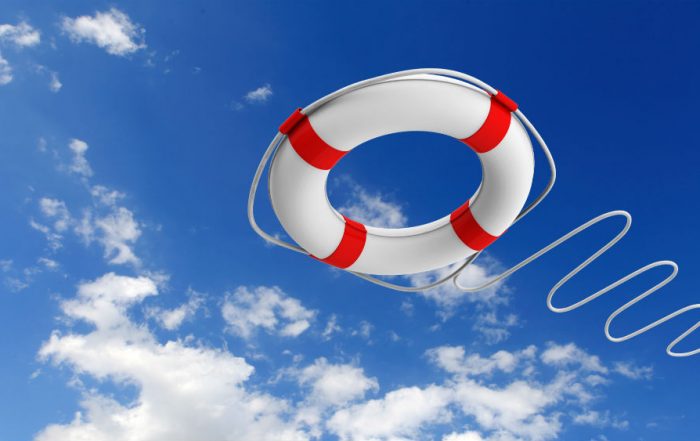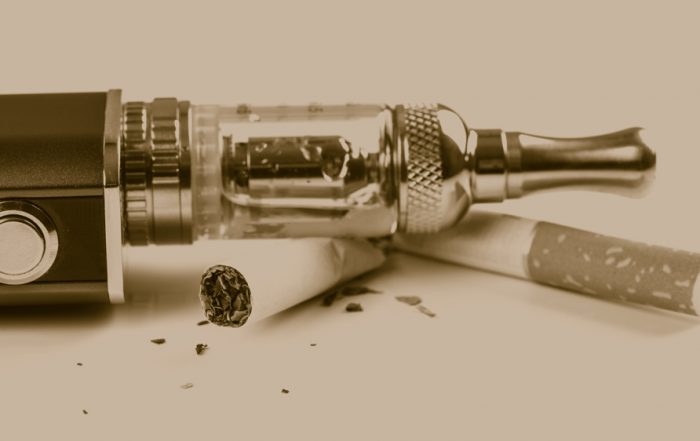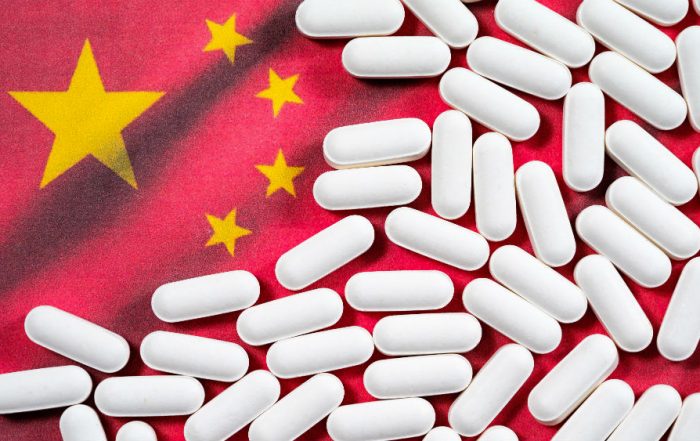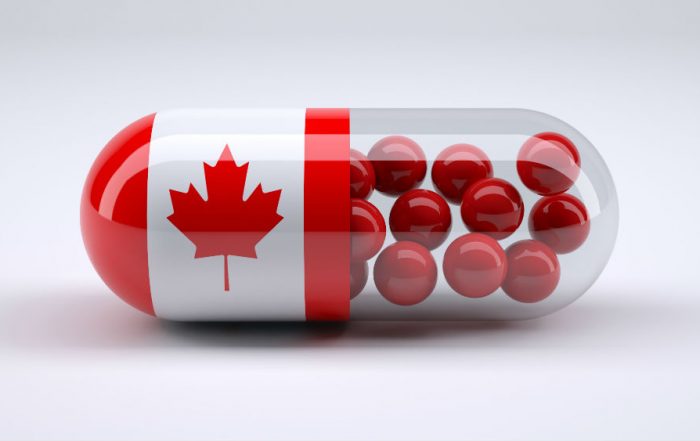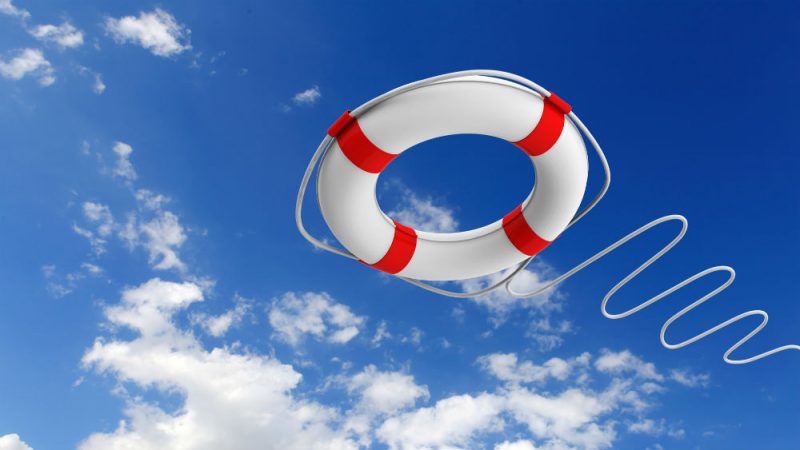
Helping to Stop Death, Destruction, and Diarrhea: FDA’s Tools to Respond to Public Health Emergencies
by John Johnson III
Death, destruction, and diarrhea: this was a chant from my school days to signify panic and chaos. Public health emergencies are primed to cause such chaos and if not “respond[ed] to quickly and to scale, outbreaks become epidemics, natural disasters become crucibles for illness, and the human toll of terrorist attacks can mount.”1 Public health officials have several tools to protect the public from biological, chemical/radiological, and natural disaster threats. Beyond sanitation, quarantines, and other practices, medical products (drugs and medical devices) are important tools in an emergency for diagnosing sickness, preventing it, curing it, or mitigating its effects.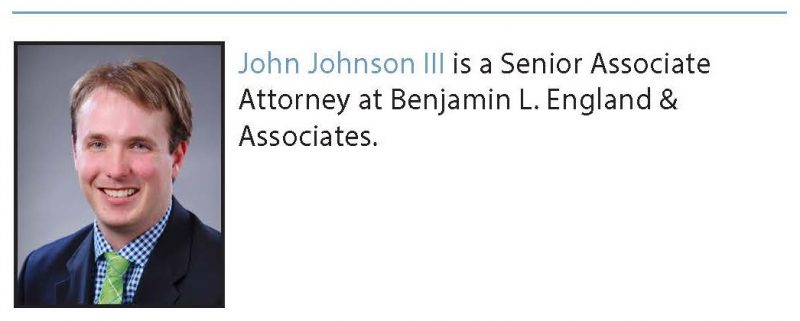
Medical products are where the Food and Drug Administration (FDA) enters the public health emergency equation. When compared to organizations like Centers for Disease Control and Prevention (CDC), National Institutes of Health (NIH), and healthcare providers, FDA plays a role that receives much less public attention but is still critical. In generic terms, researchers develop the medical products, manufacturers make them, and medical care providers treat the patients using the products. FDA stands between the researcher/manufacturer and the care providers/patients, serving as the gatekeeper to ensure that medical products are appropriately safe and effective.
A balancing act is inherent in FDA’s gatekeeper role: weighing the harm presented by doing nothing, against the harm presented by the product, against the probability that the product will work as desired. Under normal circumstances, the law through the new drug approval (NDA) and premarket approval (PMA) processes weighs heavily towards ensuring that the new article will present only known and acceptable risks and side effects and have a sufficient level of efficacy.
The equation changes in a public health crisis or one that is pending. As FDA explained during the HIV/AIDS crisis in the 1980s, when there is no approved medical product, “physicians and patients are generally willing to accept greater risks or side effects from products that treat life-threatening and severely-debilitating illnesses, than they would accept from products that treat less serious illnesses.”2 Against this backdrop, FDA has several tools to make products available during an emergency:
(1) work faster,
(2) enforcement discretion,
(3) treatment use for an investigational product, and
(4) Emergency Use Authorization and related powers.
This article serves as a survey of these options by providing their basic contours, past examples of use, and some commentary. The article, however, does not get into the minutiae of implementing these complex options.
Work Faster
Generally, new medical products require FDA premarket review (such as a 510(k) clearance) and approval (NDA and PMA) in order to comply with the Food, Drug, and Cosmetic Act (FDCA). If the products are needed for a public health emergency, FDA can always prioritize its workload to complete these reviews faster in order to get the products into the market sooner.3 For example, FDA prioritized its review to approve intravenous (IV) fluids in order to resolve a shortage made worse by Hurricane Maria.4
The weakness with the work harder approach is it presumes there is sufficient information to obtain the premarket clearance or approval, and FDA’s workload is the only impediment. In many cases, the potentially helpful medical product lacks sufficient information to satisfy the approval requirements or the information cannot be obtained in a meaningful amount of time. Thus, no matter how hard FDA works, the product will not be available to help under the standard regulatory regime. This option works best when the product is in the final stages prior to being marketed and just needs a little push over the line.
Enforcement Discretion
As the regulatory agency charged with enforcing the FDCA, FDA generally has an inherent authority to exercise its discretion whether to take an enforcement action or not. In fact, the foundational case (Heckler v. Chaney5) involves a challenge to FDA refusing to take an enforcement action against drugs used for executions.6 FDA exercises its discretion periodically in times of crisis (or to avoid one) related to various statutory requirements.
Illustrative of this approach, FDA will periodically exercise its discretion in instances of drug shortages which “pose a significant public health threat, delaying, and in some cases even denying, critically needed care for patients.”7 For example, Hurricane Maria devastated Puerto Rico, which is where numerous drug manufacturing facilities are located. Prior to the hurricane (dating back to 2014), the United States was experiencing a shortage of IV fluids—fluids that are directly delivered into patients’ veins when they are unable to satisfy their fluid and electrolyte needs through conventional means, like drinking. To alleviate the shortage made worse by Hurricane Maria, FDA permitted companies to import IV fluids into the United States from facilities that lacked the necessary approval.8 In an unrelated instance, FDA exercised discretion to temporarily allow a drug that included small particles to be used if healthcare providers were warned that they must filter the drug prior to administration.9
When FDA exercises its discretion, it does not allow anything into the market. Rather, the agency conducts a review that the product will have “adequate quality and […] not pose undo risks to patients.”10 As FDA acknowledges, the enforcement discretion process is individualized: “each situation must be carefully evaluated to determine public health impact, keeping in mind that a given action may have unintended, and potentially long-term, consequences.”11
Enforcement discretion has the advantage of easy implementation for FDA because the FDCA does not obligate the agency to work with third-parties like other government agencies (that said, of course FDA does not act in a vacuum and works with others in these instances). Thus, FDA can decide which factors it will consider and how quickly it will evaluate them.12 However, enforcement discretion can be undesirable from FDA’s perspective because some may interpret “discretion” as FDA playing fast and loose with the law. Also, FDA is concerned that enforcement discretion, “could create a long-term disincentive for manufacturers to invest in manufacturing upgrades or other quality improvements to avoid disruptions in supply, exacerbating the risk of shortages over the long term.”13 Moreover, industry may view “enforcement discretion” as inherently discretionary and potentially subject to change without procedural protections.
Treatment Use for an Investigational Product
FDA’s regulations for investigational drug products14 and investigational devices15 provide a mechanism whereby an investigational product may be made available for treatment (for our purposes, we will only explore the drug regime). The regulations permit individual use on a case-by-case basis, but also widespread use. This approach was first used by FDA in the 1970s with methadone for treating narcotic addiction and then refined during the 1980s in response to the HIV/AIDS crisis.16
This process is now referred to as Expanded Access or compassionate use. With this mechanism, doctors treating “patients with serious or immediately life-threatening diseases or conditions who lack therapeutic alternatives” can obtain investigational drug products to treat the patient, as compared to obtaining information for an investigation.”17 There are three categories:
(1) individual patient, including for emergency use,18
(2) intermediate-size patient populations (somewhere between individual patient and treatment IND) 19, and
(3) treatment IND or treatment protocol (widespread use).20
Regardless of the category, several criteria must be met and they require patient, physician, IND sponsor or clinical investigator, and Institutional Review Board (IRB) involvement. FDA then reviews the submission and either allows the use or not.
FDA used this approach in responding to the 2001 anthrax crisis (although under a previous version of the regulations). Starting one week after the September 11 terrorist attack, letters containing anthrax were mailed to the National Enquirer Office, Senate Majority Leader Tom Daschle, and several other offices. This exposed numerous postal officials and others to anthrax, killing five people. Since there was no approved anthrax vaccine, FDA used the treatment IND process to allow those individuals deemed high-risk to use an investigational vaccine for anthrax.21
The IND approach has been considered by some to be too rigid to respond to some public health emergencies.22 First, this approach requires having a product subject to the IND process. Second, the IND process itself includes several formalities to preserve patient safety while avoiding interfering with developing an investigational product. These include “Institutional Review Board (IRB) approval of the investigational protocol, documented informed consent from all patients describing, among other things, the research purposes of the protocol, substantial record keeping, and patient follow-up requirements.”23 These steps can slow down the response time or make widespread use more difficult.
These critiques reflect that the IND approach is not a solution that fits all circumstances. It is important in the right one; FDA used its emergency IND process to provide an experimental Ebola drug to patients affected with the virus.24 At the same time FDA used its Emergency Use Authorization authority for several Ebola diagnostic tests.25
Emergency Use Authorization and Related Powers
This category consists of three separate authorities pertaining to “medical countermeasures” (drugs, biologics, and medical devices) that are used to respond to emergencies or potential ones involving chemical, biological, radiological, and nuclear threats.26 The three separate authorities are:
(1) Emergency Use Authorization,27
(2) Emergency use of an FDA-approved medical countermeasure 28, and
(3) Government pre-positioning of products for emergency use.29
The Emergency Use Authorization establishes a legal basis for the use of unapproved medical countermeasures. Additionally, this authority also allows for unapproved uses of an approved product, and for limiting the requirements related to current Good Manufacturing Practices (cGMPs).
To issue an Emergency Use Authorization, the Defense Secretary, Homeland Security Secretary, or Health and Human Services Secretary make an appropriate determination about an emergency or potential one for a chemical, biological, radiological, nuclear threat. Then the Health and Human Services Secretary makes a declaration that circumstances exist to justify an Emergency Use Authorization. After that, the matter goes to the FDA Commissioner, who after consulting with other government entities and satisfying statutory requirements, may issue the Emergency Use Authorization. When granting an Emergency Use Authorization, FDA establishes its scope and may establish conditions. Ultimately the Emergency Use Authorization is terminated when circumstances change (the emergency is gone) or the product’s approval status changes, e.g., it becomes approved.30
Beyond issuing an Emergency Use Authorization, FDA also has the authority to permit certain generally non-permissible acts for approved medical countermeasures (intended for use with chemical, biological, radiological, and nuclear threats) when the Defense Secretary, Homeland Security Secretary, or Health and Human Services Secretary make an appropriate determination about an emergency or potential one. In particular, FDA may permit (1) expiration date extensions, (2) waiver of cGMPs, and (3) emergency dispensing whereby a prescription is not required.31
Lastly, the government can pre-position a medical countermeasure to prepare for an emergency without the product needing FDA approval or an Emergency Use Authorization. This basis only allows for positioning the product; it cannot be used under this provision.32 So for the product to be used, it will either need FDA approval, emergency use of an FDA-approved medical countermeasures (Section 564A), an Emergency Use Authorization, IND for treatment, or some other authority.33
After Congress created the Emergency Use Authorization provision in 2004, FDA first used it in 2005 for Anthrax Vaccine Adsorbed.34 Since then FDA has continued to use this authority.35 For example, when responding to the Ebola crisis, the agency issued multiple Emergency Use Authorizations for diagnostic test kits.36 Then again with the Zika diagnostic test kits, FDA issued multiple Emergency Use Authorizations.37
Conclusions
For 80 years, FDA has served as a gatekeeper to ensure the safety (and later, effectiveness) of the drug supply (and later, the medical device supply). While serving in this capacity, FDA has had to respond to situations where the original statutory framework (which assumes no emergency) was not well-suited to respond to a public health crisis. Through its own initiative and through statutory revisions, FDA has different tools to ensure that medical products are available to respond to a public health crisis. They are each tailored to resolve different problems associated with a public health crisis, thereby limiting any negative impact and saving lives.
- CDC, Public Health Preparedness and Response National Snapshot 2017, 7, https://www.cdc.gov/phpr/whyitmatters/00_docs/2017_PublicHealthPreparednessSnapshot_508.pdf.
- 53 Fed. Reg. 41516 (Oct. 21, 1988) (interim rule for the treatment IND regulations).
- This is admittedly a gross generalization as the clearance and approval process have several steps and can require input from others.
- See FDA, FDA Works to Help Relieve the IV Fluid Shortages in Wake of Hurricane Maria, https://www.fda.gov/Drugs/DrugSafety/ucm585052.htm (“IV Fluid Shortages & Hurricane Maria”).
- 470 U.S. 821 (1985).
- But see Cook v. FDA, 733 F. 3d 1 (D.C. Cir. 2013) (holding that FDA cannot exercise enforcement discretion over imported drug products intended for execution use).
- FDA, Strategic Plan for Preventing and Mitigating Drug Shortages, 3 (October 2013), https://www.fda.gov/downloads/Drugs/DrugSafety/DrugShortages/UCM372566.pdf (“Strategic Plan for Drug Shortages”).
- See IV Fluid Shortages & Hurricane Maria.
- See Strategic Plan for Drug Shortages, 14.
- See IV Fluid Shortages & Hurricane Maria.
- Strategic Plan for Drug Shortages, 14-15.
- Admittedly this requires much internal coordination. See id., 24-26.
- Id., 15.
- 21 C.F.R. Part 312, Subpart I.
- 21 C.F.R. § 812.36.
- 53 Fed. Reg. 41516
- FDA, Expanded Access to Investigational Drugs for Treatment Use – Questions and Answers, 2 (October 2017), available at https://www.fda.gov/downloads/drugs/guidances/ucm351261.pdf.
- 21 C.F.R. 312.310.
- 21 C.F.R. 312.315.
- 21 C.F.R. 312.320.
- See S. Quinn, T. Thomas, S. Kumar, The Anthrax Vaccine and Research: Reactions from Postal Workers and Public Health Professionals, 6 Biosecurity & Bioterrorism 321 (Dec. 2008), https://www.ncbi.nlm.nih.gov/pmc/articles/PMC2963592.
- See, e.g., S. Nightingale, J. Prasher, S. Simonson, Emergency Use Authorization (EUA) to Enable Use of Needed Products in Civilian and Military Emergencies, United States 13 Emerging Infectious Diseases (July 2007), available at https://wwwnc.cdc.gov/eid/article/13/7/06-1188_article.
- Id.
- L. Scudder and L. Borio, Responding to Ebola: The View from the FDA, https://www.medscape.com/viewarticle/830142.
- See, e.g., FDA, Emergency Use Authorization, available at https://www.fda.gov/EmergencyPreparedness/Counterterrorism/MedicalCountermeasures/MCMLegalRegulatoryandPolicyFramework/ucm182568.htm (“Emergency Use Authorization List”) (containing a list of active authorizations).
- See generally FDA, Guidance: Emergency Use Authorization of Medical Products and Related Authorities, available at https://www.fda.gov/RegulatoryInformation/Guidances/ucm125127.htm.
- FDCA, Section 564.
- FDCA, Section 564A.
- FDCA, Section 564B.
- FDCA, Section 564; see FDA, Summary of Process for EUA Issuance, https://www.fda.gov/EmergencyPreparedness/Counterterrorism/MedicalCountermeasures/MCMLegalRegulatoryandPolicyFramework/ucm411445.htm.
- FDCA, Section 564A.
- FDCA, Section 564B.
- See Guidance for Emergency Use Authorization of Medical Products and Related Authorities, Section V.
- See FDA, Emergency Use Authorization – Archived Information, https://www.fda.gov/EmergencyPreparedness/Counterterrorism/MedicalCountermeasures/MCMLegalRegulatoryandPolicyFramework/ucm264224.htm
- See, e.g., id.; see also Emergency Use Authorization List.
- See, e.g., FDA, Emergency Use Authorization (Medical Devices), https://www.fda.gov/MedicalDevices/Safety/EmergencySituations/ucm161496.htm.
- Id.
Update Magazine
March/April 2018


